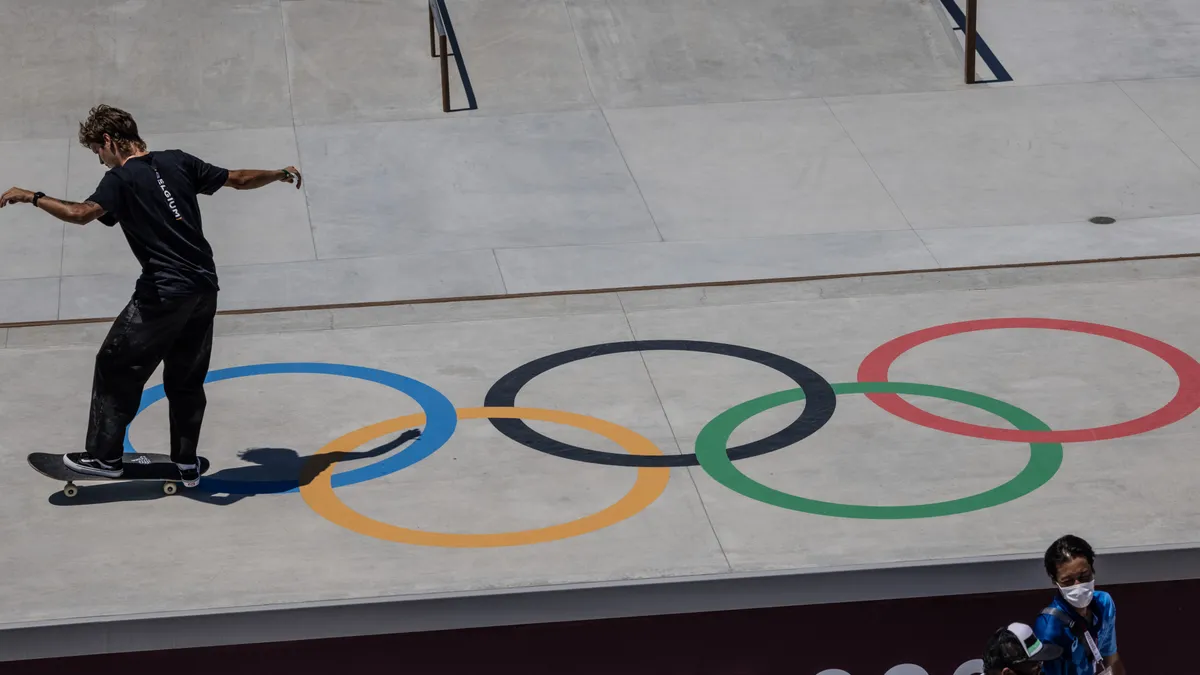The upcoming Paris Olympics are not only an opportunity to watch athletes compete for the gold, the global sports event can also provide an avenue for boosting students’ understanding of STEM subjects.
As they tune in to see newer events like breaking, skateboarding and surfing at the July 26-Aug. 11 Games, students can exercise math, science and English language arts skills — often without even realizing they are learning.
Here are a few ways to channel learning activities into summer classes, or when students return to school in the fall.
Breaking and kinetic energy
As a middle and high school educator, Mariah Jacobson teaches dance at the Community Health Academy of the Heights in New York City. Jacobson says she integrates science concepts — through broad ideas such as movement to acceleration — when she teaches her students how to dance.
One area in particular that she goes over in class is the relationship between muscle anatomy and kinesiology, or what she calls “the vocabulary of the body.”
Jacobson will explain how muscles and tendons work in the body as students move. For instance, muscles, connected to bones by tendons, allow movement like walking, or even freezing and holding a position, as they contract and relax. Receptors, attached to the muscles, send signals to let muscles know how much to contract or relax.
Breakdancing is one style Jacobson says she teaches to her students. At the Paris Games, breaking — another name for breakdancing — is the newest Olympic sport, launching this summer.
She typically starts breakdancing lessons by bringing in videos to show students moves such as freezing. She’ll also talk about energy and momentum, for example how breakdancers need to build momentum for moves like backspins.
Swimming and aerodynamics
Whitney Beck says she found the perfect hook to get students excited about the upcoming Olympic Games.The U.S. Olympic time trials for swimming were held near their hometown — at Lucas Oil Stadium, the Indianapolis Colts football stadium, which was turned into a swimming pool.
“If you’re out and about, everyone is watching the time trials,” says Beck, a 5th grade teacher at DeVaney Elementary in Terre Haute, Indiana, part of the Vigo County School Corporation. This June — after school let out — Beck served as STEM captain for the University Connections Summer Learning Adventure for elementary school students at the nearby Indiana State University campus.
Working with 350 students over two weeks, Beck and other educators developed connections to the upcoming Olympics as an anchor for STEM lessons.
One involved linking movement in the water to that in the air by comparing aerodynamics — and how something moves in space with lift and drag — to how people moving in water contend with the current. Part of the discussion also involved looking at the design of swimsuits and caps.
“We talked about swimsuits, why swimmers can’t have a lot of drag on their bodies,” she says. “We also talked about why they wear caps because hair creates a lot of drag.”
Beck also says the lessons emphasize the importance of experimenting in science. As an example, she points to using the engineering design process of observation, design, test and retest.
Beck adds that bringing trial and error into lessons can encourage students to think differently about getting something right or wrong — especially those who may get caught up in winning or losing.
It’s hard to convince students that they did not fail, she says. “You try again and it’s not wrong to ask for help and advice.”
Skateboarding and physics
Skateboarding, which debuted in the last Summer Olympics, taps into STEM topics like centripetal force and the mathematics of speed.
“The science of skateboarding is a great way to help students understand a variety of physics topics in particular, including conservation of energy, centripetal force, momentum and gravity,” says Megan Taylor, director of the Teacher Institute at the Exploratorium, a science, technology and arts museum in San Francisco.
Taylor suggests educators have students perform simple experiments in classes connected to skateboarding, even using miniature versions of themselves and putting them through tests to talk about force and motion. She says that lessons like these can make watching professional skateboarding “seem far more impressive because students can appreciate why certain tricks or jumps or rotations are so much harder to pull off than others,” she says.
Ultimately the Olympics may open the door to science precisely because the summer event provides a real-world lens into how science is applied in everyday life. Educators as well as parents can help broaden the two-week Games from just a viewing activity into one that taps student curiosity about the world.
Taylor encourages teachers, parents and caregivers to ask students questions during the Olympics — from what may be happening to athletes as they compete to the science behind the sports.
This can include the physics propelling their movement and the mathematics needed to calculate records. She also suggests asking students to think about what the competitors need to do biologically, physically and physiologically to perform at such high levels.
“The Olympics allows students to see science through a new lens, contextualizing so much science content young people are exposed to in school,” says Taylor.
Resources
- Free online lessons from the National Science Foundation link engineering in sports, from running to swimming, to the Summer Olympic Games.
- The United Kingdom-based Institution of Engineering and Technology also has several engineering activities for students online that link sports to STEM topics including how to design a sports wheelchair or even a hoverboard.

















